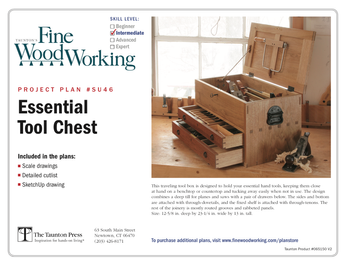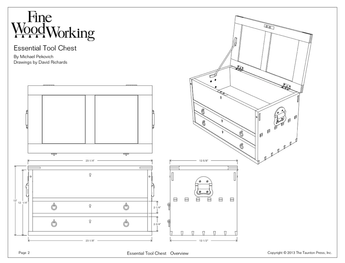I’m actually planning on building a whole set of furniture, and I have a couple of questions. I would like to use solid wood instead of ply for the end pieces, how would i attach the base molding cross grain on a dresser that is 20″ deep. I’ve linked a picture to an Ethan allen site which shows in detail what i’m trying to explain.
http://www.ethanallen.com/product?productId=1131&categoryId=8352
You have to hit the arrow on the side of the pic a couple times to get the end view. you can also zoom in. Also, if you look closely, again at the end of the piece, why is there that appr 1/8″ gap between the face frame (for lack of better description) and the ply end piece(or panel, not sure what to call it).
I’ve seen nicer furniture with solid wood ends. I’m wondering if the structure actually sits on top of the base molding instead of the base molding wrapping around and attaching to the structure?
thanks.















Replies
Sir.. I differ with you..
There is nothing wrong with veneer PLY.. If you get the good stuff..
Just me though...
I spend my time on the trim and Drawer fronts andthe trim peices.... Not the basic stuff that makes up the cabinet..
But I am just a so-so woodworker..
See
http://forums.taunton.com/n/mb/message.asp?webtag=fw-knots&msg=38069.1&maxT=3
Some Plywood in here. In fact most of it... Except for the trim and stuff that holds the Plywood together!
Edited 7/10/2009 7:03 pm by WillGeorge
Will,
I really have little issue against good ply other than there's not a lot of room for error, eg sanding, and sometimes it's a pain to make a good joinery line. Primary reason for wanting to use solid, is simply that i have a lot of rough sawn cherry, and that going with ply would be an extra expense.thanks for help both of you
Sir..
forgive my post
perhaps a different system is needed for the sides. You might try a "Frame and Panel" style. If I can get a couple of pictures to post of one I made a while back, I will post a few examples. The one I've done was all out of solid wood for the sides and front. The top, is MY own style, use the top of YOUR choice. I try a bit later with a few pictures.
here are a few views of that frame and panel chest of drawers:
The third view showa the inside a little better. A plywood panel was set in the top frame. All the wood in these view was reclaimed wood. some Doug.fir, from an old barn , some old pine floor boards, some old pine base-boards, and the 'corner posts" were from an old 4x8 beam, also pine. The panels were planed down to about 1/2" thick. They set in rebates in the corner posts and the stiles. The screw holes are to hold the web-frames that the drawers slide on. When this dresser was done, I could STAND on top of it and it would not "deform" one bit. This dresser can be built out of ANY wood you would care to use.
Primary reason for wanting to use solid, is simply that i have a lot of rough sawn cherry,..
Sure wish I had alot of that wood!
Last week I lost a very old wallnut tree.. Just the top of it!
I called my friends that are Check Iron workers..
We removed the tree in half a day.. I Spent the half of the day listing to them in another language I do not underastand..But we drink well together!
Like a reveal in a furniture design, it's amazing how a good beverage blurs the lines between different languages. ;-)
I have built them both ways, with a separate base and also with a cross band condition but the base molding on the end was glued in the center only (about 3 inches) and attached with screws from the inside. Have made over 20 dressers in 30 years and never have had any problems with the end board trim causing a cracking of the solid wood end, I have also used veener plywood for the ends also.
First of all that 1/8" gap you refer to is often called a "reveal", and it's there because it makes life easier for a factory working under industrial conditions. Quite simply, it blurs any inaccuracies in the joining of the side panel to the face frame member, whether they be in the perfect closing of the joint or the pieces being in the same plane. They do it that way to avoid any hand planing and/or sanding of the joint. But there is no reason why a home woodworker would need to create that reveal.
As far as your base is concerned, you have a few options. Large bases are usually constructed separately as integral units, then attached to the cabinet firmly at the front while allowing expansion to happen at the rear. Most trim moldings can be pinned to the base only. Traditionally, small trim moldings were often simply nailed (read 23 gauge pin for you) to the carcase sides and left to deal with the problem of expansion as best they can.
David Ring
http://www.touchwood.co.il/?lang=e&id=1
David..
Quite simply, it blurs any inaccuracies in the joining of the side panel to the face frame member, whether they be in the perfect closing of the joint or the pieces being in the same plane. They do it that way to avoid any hand planing and/or sanding of the joint. But there is no reason why a home woodworker would need to create that reveal.
Sir.. Yes..
As in I sand the edges of everything before I assemble.. A little 'blur' for my mistakes..?
This forum post is now archived. Commenting has been disabled